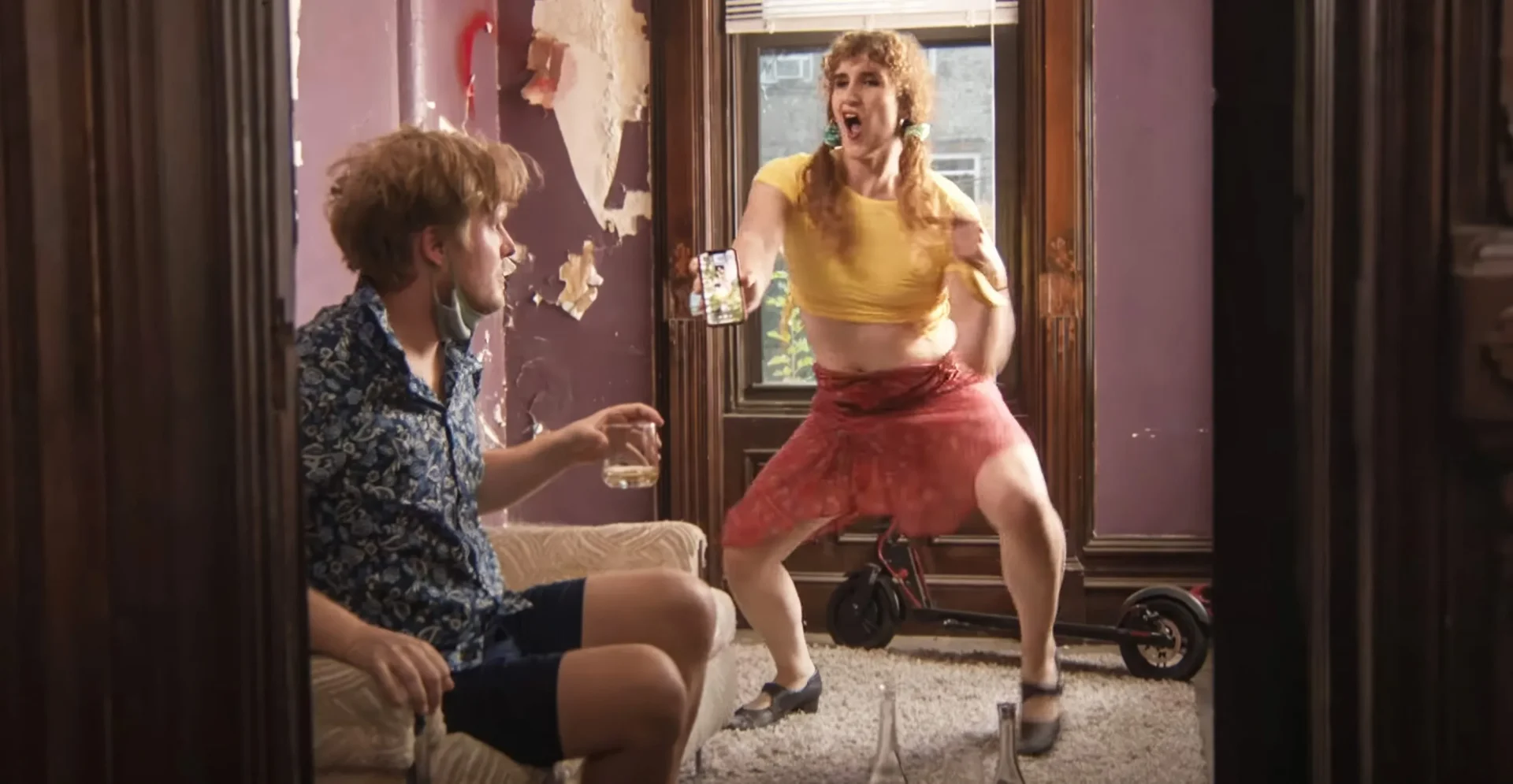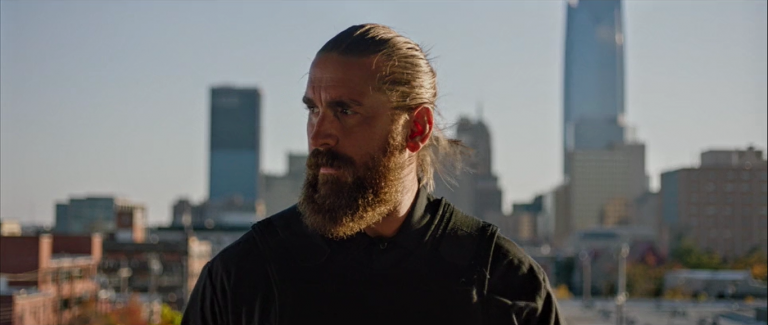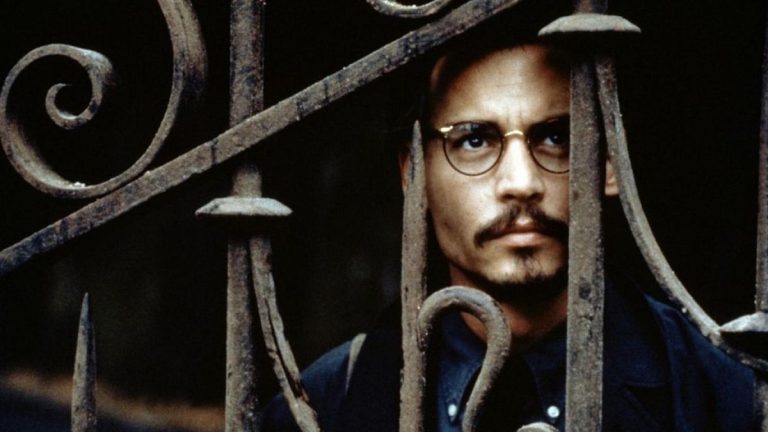Theda Hammel’s “Stress Positions” premiered at the Sundance Film Festival earlier this year. Theda has returned to the festival with her feature debut after her short film, “My Trip to Spain,” played in 2022. Featuring a stellar performance by John Early, “Stress Positions” is a rollicking treat of a film.
Stress Positions (2024) Plot Summary & Movie Synopsis:
Set during the pandemic, “Stress Positions” articulates via a bunch of separate interior monologues the hidden emotions and anxieties of its characters, while it is squarely situated around the temporary living arrangement of Terry (John Early). He finds himself amidst an unexpected breakup from his husband, Leo (John Roberts). Leo is rich, Terry has mostly been living off him. So Terry is caught up in a situation of precarity. It doesn’t help that he also has to take care of his twenty-year-old nephew, Bahlul (Qaher Harhash), who is a model and has had an accident. He has put up Bahlul in his place.
Terry is beset by the virus paranoia. This is a true-blue pandemic film. There is the constant apprehension and caution which Terry is super-particular about. He insists on gas masks, and his vigilance about safety takes on several comic registers. He is finicky and can be quite delusional. But he is determined to take good care of his nephew, preferring Bahlul to be always in his room. Bahlul, however, strains for sociability and chatter. He is also an easy charmer; Harhash’s abundant attractiveness makes him screen-popping and compulsively watchable. The film hops between this duo and their neighbors. Coco (Rebecca F. Wright) lives upstairs and doesn’t have any dialogue, but her voyeuristic tendencies slowly exert themselves. She is also a tech nerd which is why Terry is also dependent on her for fixing the internet connection that keeps zipping out.
Then there’s Karla, played by Hammel herself, whose relationship with Vannessa (Amy Zimmer) is nearing a bitter end. Vanessa is an author whose ripping off details from the relationship has angered Karla. Karla refuses to come to peace with it, even as Vanessa asserts her own authorial right and counters the allegation that it’s all drawn from their real-life interactions. Karla’s fling with a delivery guy brings a burden of more complications into the fray.
Divided into three acts, the film’s swirling absent presence is the figure of Terry’s sister and Bahlul’s mother. Her disapproval and censure hang heavy in the air among the exchanges that the uncle and nephew have, which Karla also joins in the film’s most thoughtfully packed scene. Bahlul’s mother hasn’t warmed up to her son being a model, which is why he chooses to take refuge in his gay uncle, confident he will be more liberal and accepting. Even as Terry and Karla may have a couple of blind spots in their knowledge and sport few prejudices, they are nevertheless curious beings, willing to absorb. There’s a full-fledged, fabulously written scene among the three of them, as ignorance of diversity bubbles to the fore despite Terry and Karla’s best attempts at proving their awareness.
Stress Positions (2024) Movie Ending Explained:
What happens to Bahlul?
In the final act, Leo arrives impromptu with his new partner and a band of friends. There is a giant party, and Terry couldn’t be more terrified of catching the virus as annoyed he is with the whole situation. Leo’s licentiousness hits a high note, and so does the revelation of Coco actually voyeuristically observing Bahlul. In the middle of the party, Leo collapses in a cardiac arrest and is rushed to hospital. Bahlul, on the other hand, is entirely fed up with the living arrangement and takes off alone without informing his nephew. Even Karla and Vanessa break up. However, the film chooses to preserve some ambiguity on Terry, though things don’t end well for him either.
Stress Positions (2024) Movie Review:

With “Stress Positions,” Theda Hammel proves herself to be an extraordinarily smart, wickedly funny observer of human foolishness, hypocrisies, and bloated vanities. The satire is characterized by unflagging energy and devilishly cutting wit. It gets occasionally difficult and overwhelming to keep up with the film’s breathlessly accelerated tempo. Hammel tends to hurl the viewer into a storm of chatter, spinning among various characters, cutting frantically from one to the other.
This isn’t a film that takes any extravagant pauses. In its high energy, Hammel pumps a seething, terrifically mischievous takedown of an almost countless number of millennial anxieties. She shows the fine fault lines through a conversation that may start light but grows progressively tighter and nerve-wracking. The wildness running through the narrative also reveals a discursive curiosity. The dialogues are tart, biting, and spectacularly animated with specific, individual character-driven quirks and tensions.
“Stress Positions” is comfortable in its heightened chaos, so much so that it becomes a marker of sorts. However, beyond the demented lunacy with which the situations pan out, there are reserves of an exploratory, investigative tendency. Brimming with inclinations to prod at and dig into the concerted projections of people, getting beneath the skin of intent and reaching out into the depth of open feelings, the film could have been hectoring considering the debates it steps into, but thankfully, it has a silky quality to it.
The film is rich in ironies. For all the seeming overstatement on display, it manages to retain something more quietly incisive and searching in its incursions into the many clashes of love and hate that bind the characters together. Characters spar with each other. There’s tenderness and spite intermingled. Affection and annoyance sit side by side within the ambit of their regard for each other.
There is a mutual getting on the nerves but also a need that belies the friction. Crucially, Hammel puts a spotlight on the melting-pot nature of America along with the gulfs that exist among its disparately hailing citizens. “Stress Positions” is vividly alive to the complex, myriad shades of its diverse, motley characters, stressing the differences but also how one may inadvertently be a source of encouragement to the other.








![Punch-Drunk Love [2002]: A Journey Towards Self-Acceptance](https://79468c92.delivery.rocketcdn.me/wp-content/uploads/2017/03/cae17bd046b5ecd6d170cedea5d0a491-768x328.jpg)
